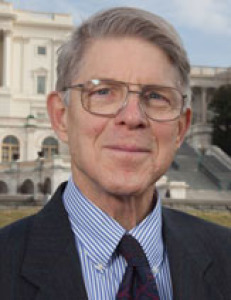WASHINGTON, May 28, 2014 - The 2014 Farm Bill earmarked $200 million to launch a non-government, non-profit Foundation for Food and Agriculture Research (FFAR). The goal is to support public-private collaboration in agricultural research and to attract matching money from the private sector in order to “identify unmet and emerging agricultural research needs.”
Agribusiness has already shown strong support for FFAR by submitting over 325 nominations to fill private industry’s seven seats on the foundation’s 15-member board. USDA reports that “the nominations represent a broad cross-section of the diversity of the food and agriculture community.”
The first FFAR board meeting is expected in July, once Agriculture Secretary Tom Vilsack names the 15 board members, including eight researchers from nominees selected by the National Academy of Sciences. Until then, the industry is expected to help educate the public and Congress about the importance of ag research, and create a private-sector funding stream to match the initial $200 million in federal support.
Vilsack explains says selecting a board that reflects the diversity of American agriculture “is a complicated process.” He promises to appoint a board that represents the full spectrum of crops and livestock, understands ag research issues, and also has sound business expertise “because these people are going to have control over at least $400 million by the time this thing is ultimately set up.” He says he’ll avoid appointing anyone “concerned about a small sliver of agriculture,” with “such a specific agenda that it overwhelms the necessity of having a national agenda.”
Vilsack also said he wants to make sure that private-sector matching funds don’t create the impression that corporate money is affecting research decisions. He says it’s important to build broad support for FFAR to address “the enormous challenge that agriculture faces” and that FFAR becomes “so successful that Congress feels compelled to continue to fund it” and businesses will continue their support. His goal: to see the foundation grow into “something akin to what the National Institute of Health has been where are you’re doing billions of dollars of research on an annual basis.”
Tyson Redpath with the Russell Group, a DC lobbying firm, predicts that FFAR will help “amplify farm science, ag research, raise its visibility, and align priorities.” He expects industry’s seven board members to become “wonderful ambassadors” who not only raise funds for ag research but “tell the story of farm science so it connects more to the individual American.”
The potential $400 million addition to USDA’s current $2.7 billion annual research spending may sound grand, but it pales when compared to what’s going on in China. Tom Van Arsdall, executive director of the National Coalition for Food and Agricultural Reseach (C-FAR), told lawmakers at a Senate hearing in April that China plans to spend 16 times that amount, $45 billion, on agricultural research annually.
Van Arsdall said “multiple analyses document that federal investments in food and agricultural research, extension and education yield exceptional returns – 45 percent annually, on average.” He said that along with boosting agricultural productivity and economic growth, ag research findings “contribute to improved human health, and natural resource protection and sustainability.” For details on USDA’s research achievements, Van Arsdall recommended that senators check out the department’s latest “Technology Transfer” report released April 23, listing the USDA’s 51 patents, 147 patent applications, 180 new inventions, and 397 income-bearing licenses for FY 2013.
Considering those impressive returns, Van Arsdall said he is frustrated by what he calls a continuing “serious deficit in federal funding” for food and agricultural research. But he also sees great promise, telling Agri-Pulse that along with dozens of other organizations, his group is excited that Congress created FFAR as an independent non-profit with “the potential to significantly expand support and funding for ag research.”
William Danforth who chairs both the Donald Danforth Plant Science Center and the SoAR (Supporters of Agricultural Research) Foundation also testified at the Senate hearing, telling lawmakers that agriculture is getting shortchanged when it comes to research dollars, “even though it is addressing some of the major challenges facing humankind.” For every federal dollar allocated for agricultural research, $14 is budgeted for medical research, he said.
Echoing recommendations from a 2004 USDA Research Task Force he chaired, Danforth called for modernizing ag research by focusing more on competitive grants. Danforth’s 2004 report led to the creation of USDA’s National Institute for Food and Agriculture (NIFA) and its first competitive grants program, the Agriculture and Food Research Initiative (AFRI).
#30
For more news, go to www.agri-pulse.com.

